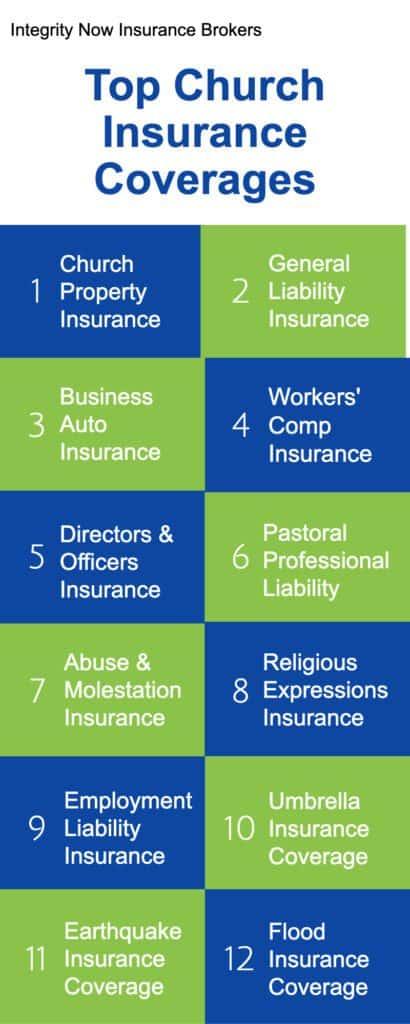When the world came to a grinding halt in early 2020, communities everywhere faced a profound upheaval — and churches were no exception. Beyond the empty pews and silent hymns, a less visible but deeply impactful struggle was unfolding behind the scenes: the challenge of navigating church insurance in a pandemic era. For many congregations, COVID-19 wasn’t just a health crisis; it became a test of resilience, faith, and financial survival. This article dives into the emotional journey of communities grappling with new insurance realities, revealing how the pandemic reshaped the way churches protect their sacred spaces and support their members in uncertain times.
Table of Contents
- The Unseen Toll on Faith Communities and Their Safety Nets
- Navigating New Risks and Rising Premiums Amid Uncertainty
- Building Resilience Through Transparent Communication and Support
- Practical Steps Churches Can Take to Protect Their Congregations and Future
- In Summary
The Unseen Toll on Faith Communities and Their Safety Nets
The sweeping impact of the pandemic stretched far beyond closed doors and empty pews; it penetrated the very fabric of faith communities, exposing vulnerabilities never fully acknowledged before. Churches, traditionally seen as pillars of support and sanctuary, found their safety nets frayed and stretched thin. The financial uncertainty hampered many ministries reliant on in-person giving, while rising insurance claims for pandemic-related disruptions created a logistical and emotional strain that few were prepared to bear.
Behind the headlines, a few stark realities emerged:
- Policy exclusions and unexpected liability exposures left congregations scrambling to understand what protection they truly had.
- Volunteer safety concerns escalated as many feared potential health risks without clear insurance guidelines.
- Community outreach programs that once served as vital lifelines encountered new hurdles, with insurance costs rising alongside the need for greater precaution.
These unseen challenges shook many faith communities to their core, forcing a reckoning with how deeply intertwined safety, insurance, and spiritual care really are.
Navigating New Risks and Rising Premiums Amid Uncertainty
Churches, once seen as sanctuaries of peace and trust, now find themselves navigating a complex web of new risks that COVID-19 has unearthed. From digital streaming liabilities to health compliance mandates, insurance policies have had to stretch beyond traditional coverage. The once predictable insurance landscape has transformed into a minefield littered with unprecedented challenges:
- Liability concerns over virtual service transmissions
- Increased health and safety protocol requirements
- Coverage gaps for unforeseen pandemic-related cases
- Expanded property risk amid fluctuating occupancy
As premiums rise sharply, many congregations feel the weight of financial strain, grappling with decisions that balance faith and fiscal responsibility. Premium hikes are not just numbers; they are a reflection of uncertainty, pushing churches to rethink budgets, fundraising efforts, and outreach strategies. This evolving reality demands more than just policy updates—it requires communities to stand resilient amid the storm, seeking creative solutions while preserving their sacred missions.
Building Resilience Through Transparent Communication and Support
In the face of unprecedented challenges, the church community discovered that open, honest dialogue became a lifeline. Leaders and members alike leaned into conversations about fears, uncertainties, and evolving insurance concerns, creating a space where vulnerability was met with empathy instead of judgment. This transparency dissolved isolation, replacing it with a shared determination to weather the storm together. The exchange of information wasn’t just practical—it became a spiritual practice, a mutual promise to protect not only the church’s assets but the well-being of every individual who called it home.
Equally vital was the establishment of tailored support systems, where empathy moved beyond words into actions. Churches began organizing virtual support groups, timely resource sharing, and financial counseling, ensuring no member felt abandoned amidst the chaos. Key elements of this support included:
- Regular virtual check-ins fostering connection and reassurance
- Access to mental health resources addressing pandemic-related stress
- Financial aid programs designed with transparency and fairness
- Collaborative forums for navigating insurance disputes and claims
These efforts didn’t just aid recovery—they transformed the community’s foundation. Through shared struggles and unwavering support, the church emerged stronger, grounded in trust and a renewed sense of collective resilience.
Practical Steps Churches Can Take to Protect Their Congregations and Future
Faced with unprecedented health challenges, churches must prioritize not only spiritual nourishment but also physical safety. Establishing comprehensive health protocols is essential, including enhanced sanitization of communal spaces, mandatory mask policies during gatherings, and clearly communicated guidelines for physical distancing. Investing in upgraded ventilation systems can drastically reduce airborne transmission, creating a safer environment for worshippers. Churches may also consider hybrid service models, blending in-person and virtual experiences to accommodate vulnerable members and those unable to attend physically.
Protecting the congregation demands proactive insurance strategies as well. It is crucial for churches to review their policies to ensure coverage addresses pandemic-related disruptions and liabilities. Working closely with insurers to customize plans can provide peace of mind against future uncertainties. Equally important is fostering a culture of transparency and communication within the community. Regular updates, open forums to address fears and questions, and offering mental health resources nurture resilience and unity. Ultimately, these concrete steps empower churches to safeguard their flock and uphold their mission in an evolving world.
In Summary
As we reflect on the journey churches have faced throughout the COVID-19 pandemic, it’s clear that the challenges extended far beyond empty pews and silent halls. The struggle to navigate new insurance landscapes became a battle not just for protection, but for the very survival of community spaces that offer comfort, hope, and connection. While the road was fraught with uncertainty and hardship, churches showed remarkable resilience—adapting, advocating, and emerging stronger. This story isn’t just about policies and premiums; it’s about a community that refused to be defined by crisis, finding new ways to safeguard their mission and their people. As we move forward, let this serve as a powerful reminder of the strength found in unity, and the enduring spirit that keeps these sacred spaces alive—no matter the storm.





